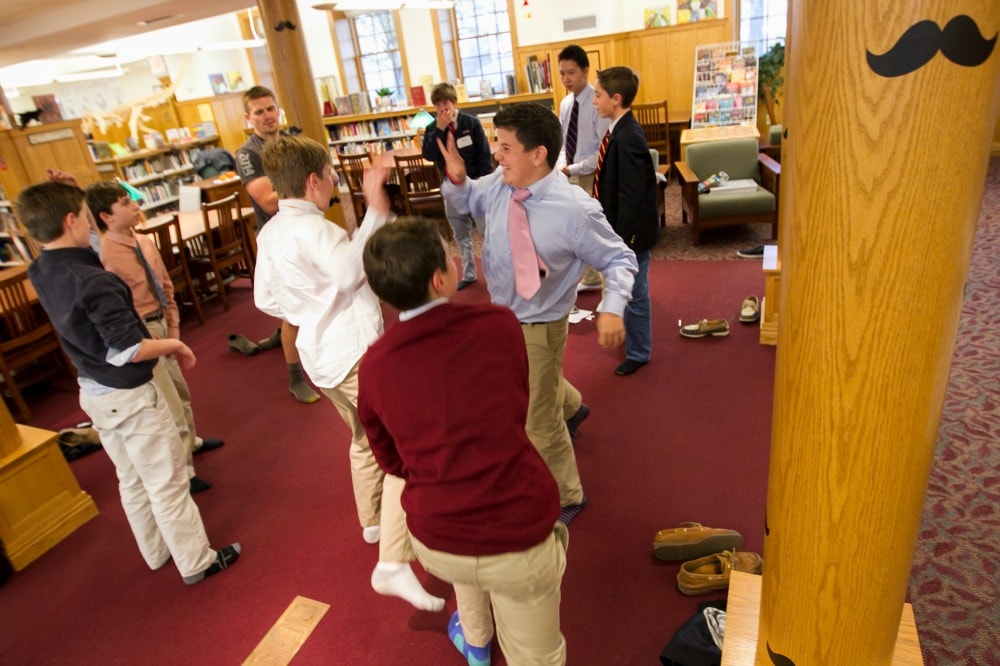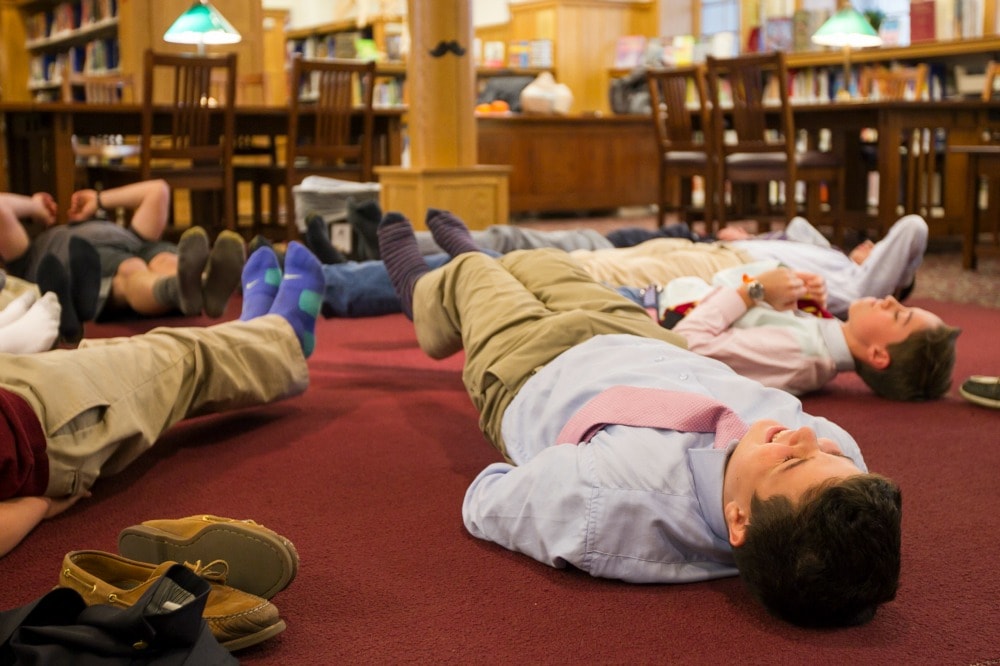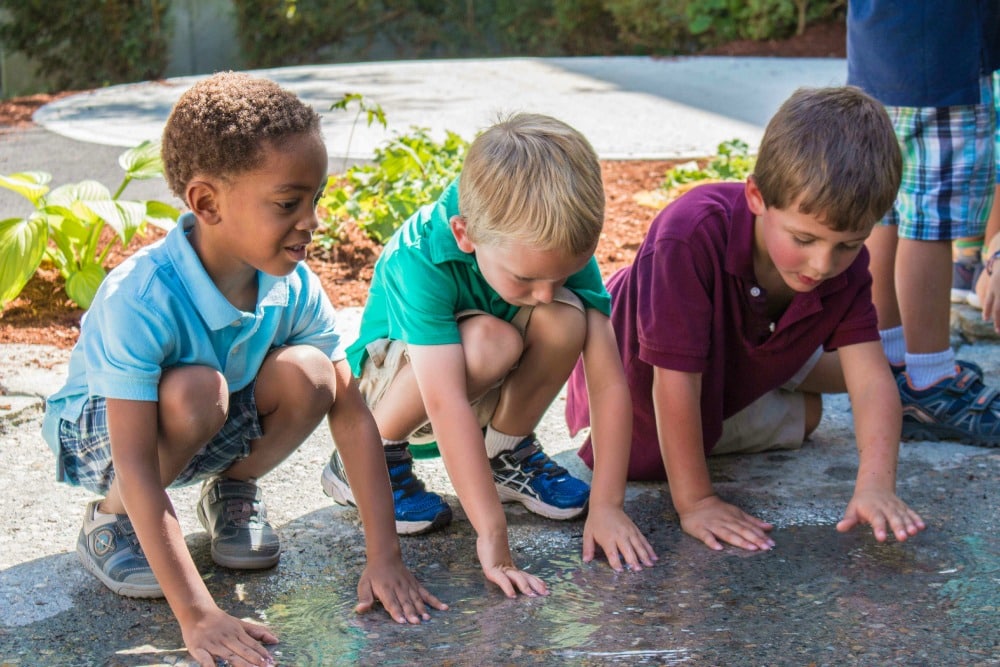You’ve seen the headlines: “Public Schools Failing Boys,” “Boys’ Dropout Rate Double that of Girls,” “Educational Crisis for Boys.” Are things really that bad for boys? And, if so, what can be done to improve these trends in the often budget-constrained, teach-to-the-test, public school environment? Are boys in private schools doing any better?
 At a recent lecture hosted by The Fessenden School, renowned child psychologist Dr. Anthony Rao confirmed that many boys are struggling to succeed in both public and private schools. Dr. Rao explained that there is nothing “wrong” with boys. The problem arises because boys and girls learn differently and most educational environments are designed for the way girls learn instead of what works best for boys.
At a recent lecture hosted by The Fessenden School, renowned child psychologist Dr. Anthony Rao confirmed that many boys are struggling to succeed in both public and private schools. Dr. Rao explained that there is nothing “wrong” with boys. The problem arises because boys and girls learn differently and most educational environments are designed for the way girls learn instead of what works best for boys.
The good news is that there are a number of things that can be done to optimize the learning environment for boys that would also benefit girls. And, unlike many “solutions,” these are practical, high-impact, low-budget changes that any school could implement. Rao encouraged parents, teachers, and administrators to take a close look at what goes on in the classroom and identify where some or all of the techniques described below could improve the learning experience across the board, but particularly for boys.
1. Body Breaks: According to Rao, evidence suggests that, nationwide, recess is diminishing, whether it’s removed from schedules completely or it’s left in the hands of a teacher to make the decision. He noted, “It’s especially important for boys to be able to move around to increase attention and focus.” Does your school dedicate time for movement in the day?
2. Mind Breaks: Dr. Rao pointed out the importance of pausing to switch activities after the completion of a particular l esson. Some example activities include stretching on yoga mats, engaging with friends and peers, or reading a book. He noted, “Boys need to let the brain digest the information it just downloaded. They are constantly cramming new information into developing brains, and ‘mind breaks’ works great.” Rao added that what we often see in education is more of a conveyor belt model; moving quickly from one thing to the next.
esson. Some example activities include stretching on yoga mats, engaging with friends and peers, or reading a book. He noted, “Boys need to let the brain digest the information it just downloaded. They are constantly cramming new information into developing brains, and ‘mind breaks’ works great.” Rao added that what we often see in education is more of a conveyor belt model; moving quickly from one thing to the next.
3. Teaching Outdoors: According to Rao, this is an “incredible game changer.” He stated that the most effective learning is based on what’s going on in the real world. He showed a photo of Fessenden’s Pre-K boys playing with the water element of their new experiential playground. “Body language. That’s one of the things I’m looking at as a psychologist,” he explained. In reference to the three boys pictured below, he exclaimed, “I think you would have to put three  screens in front of these boys to get this reaction. They’re touching the water, they feel it, there’s a true sensory experience that’s happening. That’s how learning takes place. Your senses light up when you’re outdoors.” Dr. Rao encouraged parents to inquire about schools’ policies about going outside for lessons.
screens in front of these boys to get this reaction. They’re touching the water, they feel it, there’s a true sensory experience that’s happening. That’s how learning takes place. Your senses light up when you’re outdoors.” Dr. Rao encouraged parents to inquire about schools’ policies about going outside for lessons.
4. Use Competition in Classes: “In most educational settings, we have ‘sanitized’ competition,” said Rao. Schools today tend to believe that “everyone has to be a winner.” He added, “Most boys–and a lot of girls–are highly competitive creatures. But for boys it really matters a lot, and we take it out of the experience.” He showed a picture of boys playing rugby. “What possesses them to work together to beat the opponents? This is how you get cooperation in males. You create teams, and you have them go against each other. And the teams will bond and solidify. But they don’t put the same energy into school. We’ve got to find ways of creating teams and creating competition in educational settings.”
5. Keep it Moving: “If you want the average boy to learn, let them walk around the room, let them touch things, I don’t care what their age is.” Of a video taken in Fessenden’s Innovation Lab, he said, “Check out the eye contact, the engagement, the intensity. What’s happening in the brain when we move? What’s happening to your son? Studies show that when kids get some movement, it doesn’t need to be a lot, we found that their brain lights up, it gets more active. So we know that the brain gets more nourishment when we’re active. This leads to better performance than when they’re sedentary. When you look into a classroom and students are sedentary, their brains are draining.” He stated that when boys get to move, they get more creative, they hunker down, and they focus better.
6. Let children stand at desks, lean in chairs, run in hallways: Schools can do this in a way that’s safe, according to Rao. All-boys schools use these in concert with #2 and 3 and then they bring students back in and they can focus.
To learn more about what works for boys in the classroom and at home, please visit Dr. Rao’s site or plan to attend one of his upcoming speaking events.
 About Dr. Anthony Rao
About Dr. Anthony Rao
Dr. Anthony Rao is a nationally-known expert in child psychology, appearing regularly on TV news programs and in magazines. He founded a pediatric psychology practice in Massachusetts and is the author of The Way of Boys: Promoting the Social and Emotional Development of Young Boys. He’s currently at work on his next book and shared some highlights from his current project at the November event. For more information about Dr. Rao, please visit: http://www.anthonyrao.com/
 About the Book
About the Book
Dr. Rao’s book, The Way of Boys: Promoting the Social and Emotional Development of Young Boys, is about the crisis in American boyhood. In this practical and accessible guide to the distinct challenges of raising young boys into happy and healthy young men, Dr. Rao urges parents, educators, pediatricians, psychologists, and other developmental experts to reevaluate and radically alter how we deal with our youngest boys.






I truly love your content. This article is amazing. I am sure I will be going through it several times.